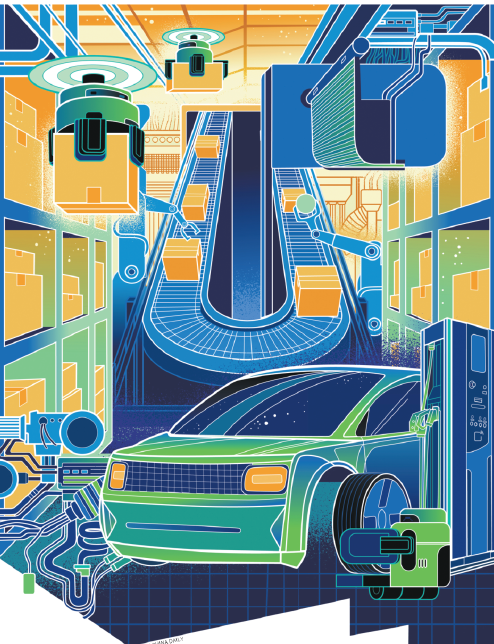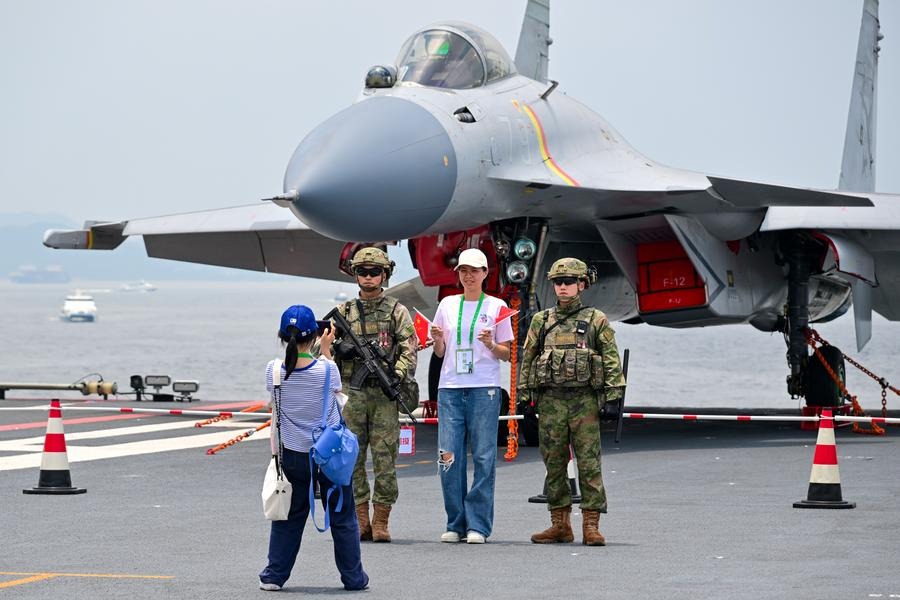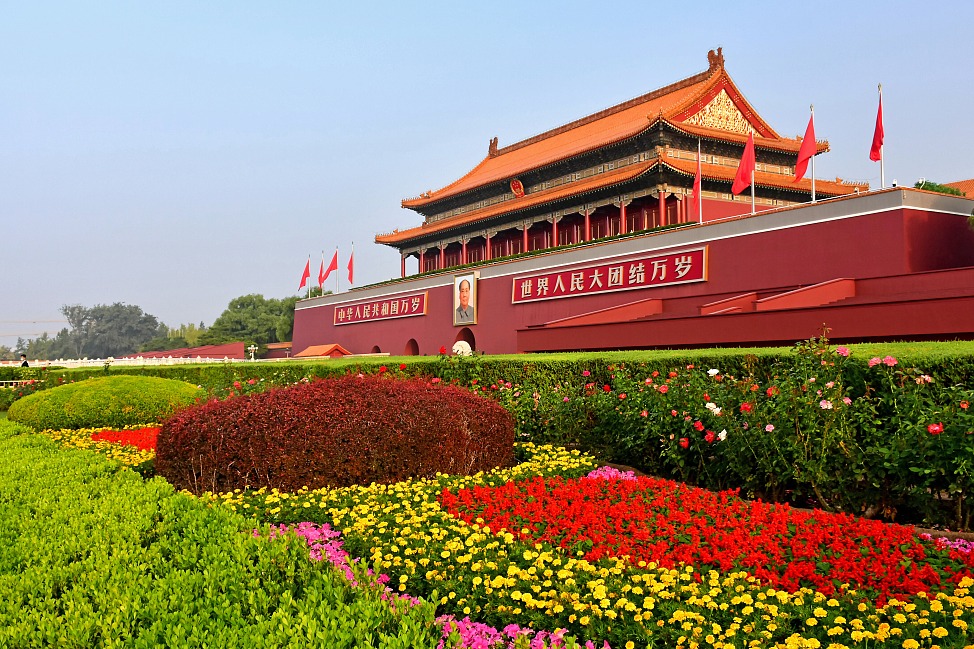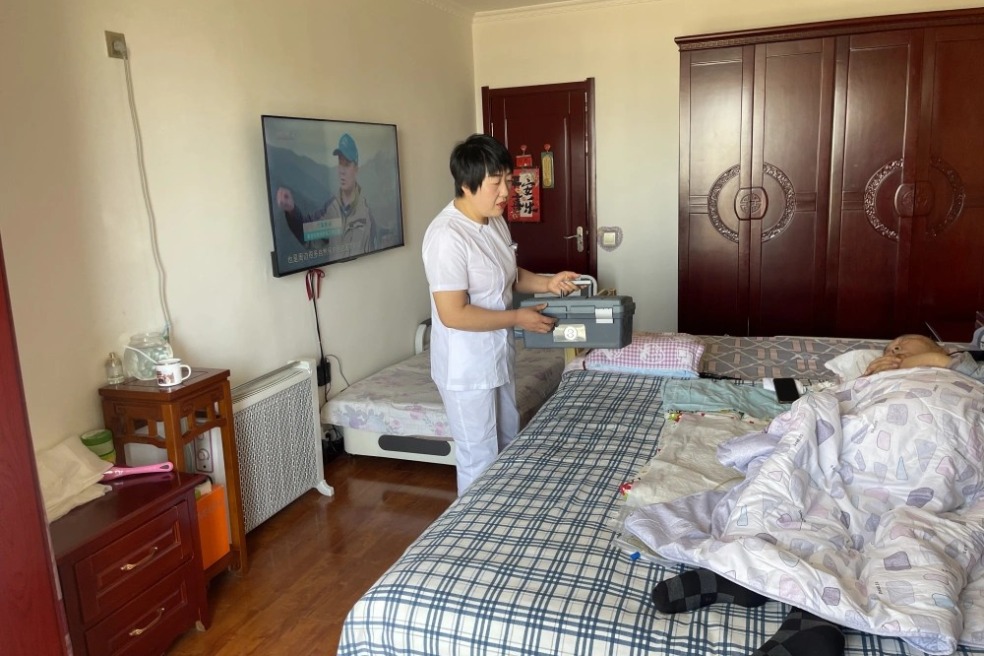Policy looks to boost industry growth
Plan may improve confidence among consumers and foreign investors

China has introduced measures to shore up the growth of its industries, pledging to boost the resilience of industry and supply chains, steady the exports of industrial products and step up services and support for foreign businesses.
A policy document released by three central government bodies, including the Ministry of Industry and Information Technology and the National Development and Reform Commission, underlined the importance of consolidating momentum among recovering industries to stabilize the economy.
It called for authorities to take steps to ensure that the industrial economy performs strongly in the fourth quarter of this year and gets off to a sound start next year.
Key measures include accelerating the construction of major projects and encouraging businesses to invest in upgrades to technology and equipment.
To further tap the market potential for businesses, the government will offer more incentives to boost auto sales, encourage the use of new-energy vehicles in public transportation and hasten the development of cruises and yachts.
The policy document's release came as China's value-added industrial output grew 6.3 percent in September and 5 percent in October, year-on-year, while fixed-asset investment increased 5.8 percent from January to October compared with the same period in 2021.
Meanwhile, the official purchasing managers' index for the manufacturing sector fell to 48 in November from 49.2 in October, marking the lowest reading since April, according to the National Bureau of Statistics.
Zhao Qinghe, a senior statistician with the NBS, said in a statement that factory activity shrank in November amid renewed COVID-19 outbreaks and a more complicated international environment. He linked COVID-19 disruptions to declines in both supply and demand in the manufacturing sector.
Gao Ming, a macroeconomics analyst at China Galaxy Securities, said the policy measures were unveiled as China's industrial economy stood out as one of the highlights in overall economic performance this year.
"Compared with the service sector, the growth of the industrial economy has been maintained at a normal rate, making the sector a key pillar for the economy," he said.
However, Gao noted that growth has slowed since July, and more policy support is needed.
The latest policy document called for structural upgrades and improvement to the quality of the industrial economy, while rolling out measures to cushion it against fallout from the epidemic, he said.
To bolster the resilience of industry and supply chains, the government will help businesses develop contingency plans in response to the outbreaks. It will also ensure reserves of production materials, the supply of daily necessities, and that employees are able to work on site.
The document also called for efforts to guarantee the reserve and supply of key raw materials, important software, core parts and components, saying in particular that the channel for the supply of chips used in automobiles must be further expanded.
The harnessing of new growth engines will be prioritized, as greater support will be offered to sectors including information technology, artificial intelligence, biotechnology, new energy, high-end equipment and industrial software.
Fu Baozong, a professor at the Academy of Macroeconomic Research with the NDRC, said that digital technology is transforming the manufacturing sector profoundly as it improves the efficiency of industries, spawns new business models and creates new drivers for growth.
He highlighted the importance of boosting the resilience of the manufacturing sector with heightened measures to ensure self-reliance in key products and core technologies.
According to the NBS, high-tech manufacturing continued to lead all industries in terms of growth in the first 10 months of this year, with a rise in added value of 10.6 percent year-on-year.
The document also outlined steps for industrial growth in the eastern, western and central regions.
It called for economic powerhouses in East China to play pivotal roles in steadying the performance of the industrial economy, including taking steps to develop high-end manufacturing, expand emerging sectors and empower industries with digital technologies.
Central and western regions should work to consolidate the momentum of rapid growth and accelerate the development of industries with local characteristics.
Large businesses should support small and medium-sized enterprises in projects and funding and ensure that debts owed to SMEs are paid on time and in full. Meanwhile, the government will strive to create a better environment for SMEs and private businesses, with measures to align competitive companies with the capital market and encourage innovation, it said.
The document also pledged to boost services and support for foreign businesses. It urged the establishment of routine exchange mechanisms between companies and governments to ensure access to labor, energy and logistics.
Authorities will make it easier for executives, technological workers and their families to enter and exit the country to encourage foreign businesses to increase investment in high technology and the upgrading of the traditional manufacturing sector. Foreign businesses will receive support to set up research and development centers and take part in projects under the national science and technology programs.
The government will refine the national business environment and improve the level of intellectual property rights protection and data governance, the document added.
Yang Fang, a senior researcher at the Institute of Digital Economy at Zhongnan University of Economics and Law in Wuhan, Hubei province, said the rollout of new measures will bolster the confidence of businesses, enable them to expand their investments and cement economic recovery.
"Sluggish demand is the primary challenge facing the ongoing economic recovery. The surge in COVID-19 cases has weighed on the growth of private incomes and has affected consumer confidence," she said.
Yang noted that the latest policy document included a slew of measures to boost consumption — encouraging the sales of home appliances in rural areas and encouragement to e-commerce platforms and retailers to conduct more promotions.
"With a host of measures to boost high-end, green and online consumption, the new document will also help spur the recovery of the retail sector, stabilize its fundamentals and promote its upgrading," she said.
xuwei@chinadaily.com.cn

- Three dead, two missing after Sichuan landslide
- Chinese-made robotic dog hits 10.3 m/s, rivals human sprinters
- Shanghai competition drives innovation in AI hardware, fintech, cybersecurity
- Shanghai summer school explores historic waterfront
- New, bilingual book on China's high-speed rail published
- China seeks to expand global influence of its railway innovations




































